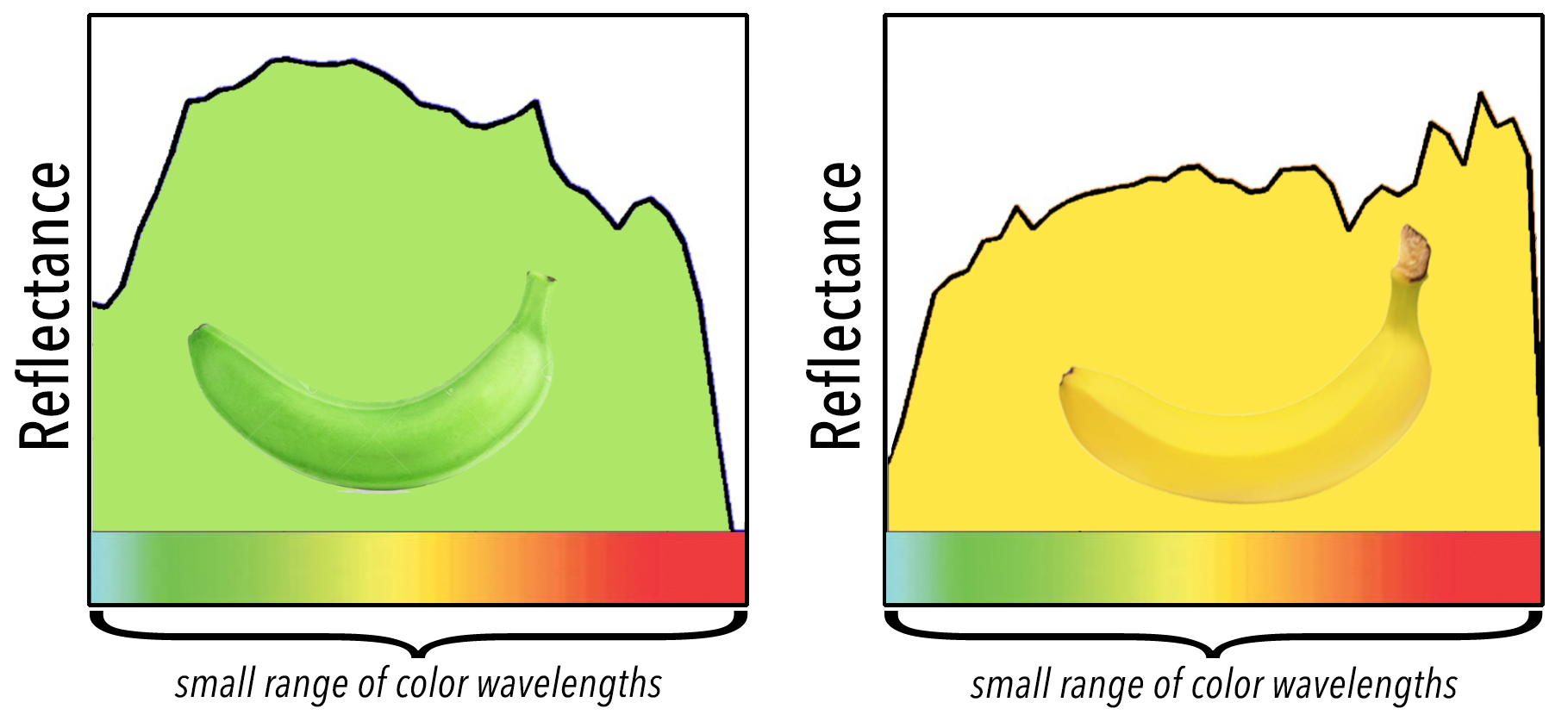Get into Shapes with PACE - A Card Matching Game
How can you learn about PACE (and have fun)?
Consisting of three rounds, you’ll click on matching cards to reveal information about PACE measurements and why they're important. Round 1 features photos of the types of matter that PACE will measure. Correct matches will reveal spectra, the data that PACE’s Ocean Color Instrument (OCI) will collect. The shape of each spectra is tied to how stuff – for example, phytoplankton species or airborne dust – reflects light. Want a "taste" of what spectra look like? Check out these bananas and their spectral shapes (black curves).

Colors of light reflected from the peel of a green unripe banana (left) versus a yellow ripe banana (right). The spectral shape (black curve) at left shows high green reflectance. The spectral shape (black curve) at right shows high reflectance in yellow-to-red parts of the visible wavelengths. (Image adapted from Cai et al., 2017)
Your newfound knowledge will come in handy for Round 2, when you match the spectral shapes themselves. Want a hint? Make sure to look at the range of wavelengths depicted at bottom. Why? PACE’s OCI can measure beyond the rainbow of colors... including several shortwave infrared bands that are key to identifying some types of matter.
Round 3 is when you’ll do what PACE scientists will do: match spectral shapes with the type of matter they represent! This round is a bit challenging but you’ll learn a lot about the type of data the OCI will collect. Even better, you’ll discover why PACE is key to helping better understand what is happening in our ocean and atmosphere. Good luck!


